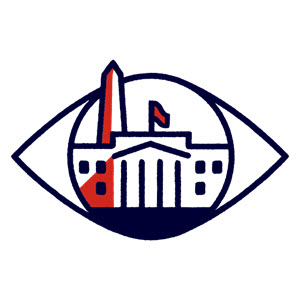New Guidance Regarding American Rescue Plan Act Sick/Family Leave Tax Credit

Employers that may be eligible for these tax credits should familiarize themselves with this important new guidance.
On June 11, 2021, the Internal Revenue Service (IRS) issued new FAQs to further explain tax credits available under the American Rescue Plan Act of 2021 (ARPA) for employers with fewer than 500 employees and certain governmental employers for qualified sick and family leave wages paid for leave taken from April 1 through September 30, 2021, either for the employee's own health needs or to care for family members. Employers that may be eligible for these tax credits should familiarize themselves with this important new guidance.
Background
In response to the COVID-19 pandemic, Congress enacted the Families First Coronavirus Response Act (FFCRA, PL 116-127) on March 18, 2020. The FFCRA required employers to provide paid leave through two separate provisions:
- The Emergency Paid Sick Leave Act (EPSLA) provided for up to 80 hours of paid sick time for employees unable to work for specified reasons related to COVID-19, and
- The Emergency Family and Medical Leave Expansion Act (Expanded FMLA) provided paid leave benefits for employees to care for others, including children whose school or childcare facility was closed or unavailable due to COVID-19.
Employers with less than 500 employees were required to provide this paid leave beginning on April 1, 2020, through December 31, 2020. The FFCRA provided refundable tax credits to employers to reimburse the full cost of qualifying paid leave wages for the periods during which employees were unable to work or telework. Certain self-employed persons were entitled to similar credits.
In December 2020, the Consolidated Appropriations Act (CAA) of 2021 (P.L. 116-260) extended the tax credits available to eligible employers for paid sick and family leave with respect to leave taken through March 31, 2021. The requirement to offer paid FFCRA leave expired in 2020, but for qualifying employers that offer it, such leave is funded by the federal government up to applicable limits, which remained unchanged. The original FFCRA limits on paid sick and family leave applied from March 2020 through March 2021
On March 11, 2021, President Biden signed the American Rescue Plan Act (ARPA) into law, which among other things extended the FFCRA Paid Sick and Family Leave tax credit from April 1 through September 30, 2021. As under the CAA, there is no requirement for employers to offer paid leave in 2021, but for employers that offer it such leave is funded by the federal government up to applicable limits. The ARCA reset the original FFCRA limits for aggregate paid leave available to each employee, providing a new "bank" of paid leave to employees who may have exhausted the 2020 limits.
For employees unable to work due to qualifying reasons described in the FFCRA, an Eligible Employer may claim a tax credit for up to two weeks (up to 80 hours) of paid sick leave up to $511 per day and $5,110 in the aggregate for leave taken from April 1 through September 30, 2021.
For employees unable to work because of a need to care for others (as defined in the FFCRA), an Eligible Employer may claim a tax credit for up to two weeks (up to 80 hours) of paid sick leave up to $200 per day and $2,000 in the aggregate for leave taken between April 1 and September 30, 2021.
Under the ARPA, Eligible Employers can apply tax credits to reimburse the cost of paid family leave needed for an employee who is unable to work due to any of the reasons that would have satisfied the requirements of the EPSLA, as amended, up to $200 per day and $12,000 in aggregate for qualified family leave wages paid with respect to leave taken from April 1 through September 30, 2021. Up to 12 weeks of qualifying leave can be counted towards the paid family leave tax credit.
The ARPA also added new reasons for which employees may take paid sick or family leave for which employers are entitled to the tax credit, including leave for time awaiting the results of a test to diagnose COVID-19, to obtain immunization, or to recover from any adverse health impacts arising from the immunization.
The tax credit is generally taken by reducing federal employment taxes by the cost of qualified leave wages (plus allocable health-plan expenses and the employer's share of Social Security and Medicare taxes imposed on the qualified leave wages). If projected federal employment taxes are expected to be insufficient, the employer can request an advance payment from the IRS using Form 7200, Advance Payment of Employer Credits Due to COVID-19. Any such requests should be carefully coordinated with the employer's tax department or payroll service provider to avoid requesting a payment and applying a credit for the same qualifying leave wages.
New Frequently Asked Questions Explain Tax Credits for Paid Leave Under the American Rescue Plan Act for Leave Taken after March 31, 2021
On June 11, 2021, the IRS released 123 frequently asked questions (FAQs) for "Tax Credits for Paid Leave Under the American Rescue Plan Act of 2021 for Leave After March 31, 2021." These FAQs provide an overview of the ARPA's refundable paid leave credit provisions, such as explaining how and when employers can receive the credits, and what documentation is required to substantiate eligibility. The FAQs provide detailed information regarding the requirements, limitations and application of the paid leave credits. Selected highlights include the following:
Under the ARPA, certain state and local governmental employers may claim tax credits for providing paid leave. The 500 or fewer employee limitation does not apply to these governmental employers, which are eligible for the credit even if they have over 500 employees.
The federal government and any federal agencies or instrumentalities thereof (other than certain 501(c)(1) tax-exempt organizations) may not claim the tax credits. Therefore, any sick and/or family leave wages paid to federal employees are not considered qualified leave wages under the ARPA, and such wages are not reported in Box 14 of Form W-2, Wage and Tax Statement or in a separate statement with the Form W-2.
Eligible Employers may receive federal tax credits under the ARPA for paid sick or paid family leave provided pursuant to a federal, state, or local law, if the leave satisfies the requirements of the EPSLA or Expanded FMLA under the ARPA. For example, California and some other states require certain employers to pay sick and family leave as defined under the FFCRA. Employers in such states are still able to apply federal tax credits under the ARPA to reimburse the cost of such leave.
Employers may receive tax credits for qualified leave wages and the employee retention credit, employer credit for Paid Family and Medical Leave under Section 45S, or PPP loan tax credits, as applicable, but not for the same wages.
Eligible Employers claiming these credits must retain records and documentation related to and supporting each employee's leave to substantiate the claim for the credits, as well as retaining the Forms 941, Employer's Quarterly Federal Tax Return, and 7200, and any other applicable filings made to the IRS requesting the credits.
Other key questions are addressed in detail, such as:
- What is included in qualified sick leave and family leave wages?
- What is the rate of pay for qualified sick leave wages?
- How are part-time employees' hours determined for purposes of the paid sick leave requirements?
- How are qualified health-plan expenses calculated?
- What are the tax consequences of claiming the tax credits for tax-exempt employers?
- How must employers report qualified leave wages on Form W-2, Wage and Tax Statement, Box 14, or in a separate statement?
- How does the similar tax credit work for qualifying self-employed individuals?
For further information
For information about FFCRA tax credits for leave taken before April 1, 2021, see Tax Credits for Paid Leave Under the Families First Coronavirus Response Act for Leave Prior to April 1, 2021 FAQs.
For leave required under the FFCRA prior to 2021, see the Department of Labor (DOL) guidance: Families First Coronavirus Response Act: Questions and Answers.
ADP Compliance Resources
ADP maintains a staff of dedicated professionals who carefully monitor federal and state legislative and regulatory measures affecting employment-related human resource, payroll, tax and benefits administration, and help ensure that ADP systems are updated as relevant laws evolve. For the latest on how federal and state tax law changes may impact your business, visit the ADP Eye on Washington Web page located at www.adp.com/regulatorynews.
ADP is committed to assisting businesses with increased compliance requirements resulting from rapidly evolving legislation. Our goal is to help minimize your administrative burden across the entire spectrum of employment-related payroll, tax, HR and benefits, so that you can focus on running your business. This information is provided as a courtesy to assist in your understanding of the impact of certain regulatory requirements and should not be construed as tax or legal advice. Such information is by nature subject to revision and may not be the most current information available. ADP encourages readers to consult with appropriate legal and/or tax advisors. Please be advised that calls to and from ADP may be monitored or recorded.
If you have any questions regarding our services, please call 855-466-0790.
ADP, Inc.
One ADP Boulevard, Roseland, NJ 07068
adp.com
Updated on June 21, 2021



